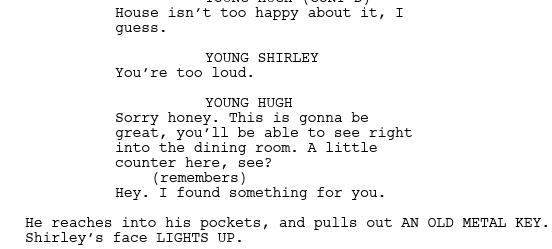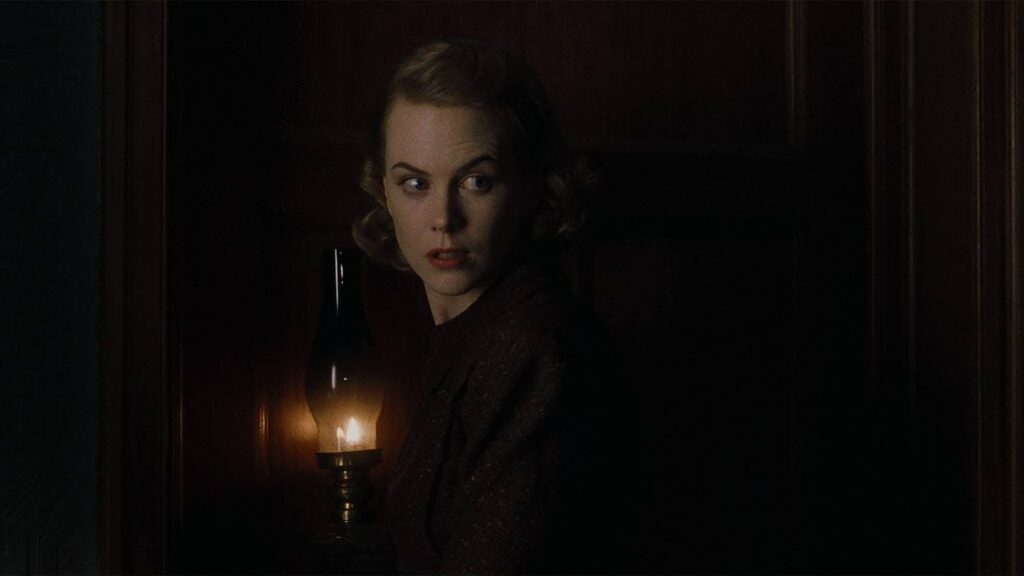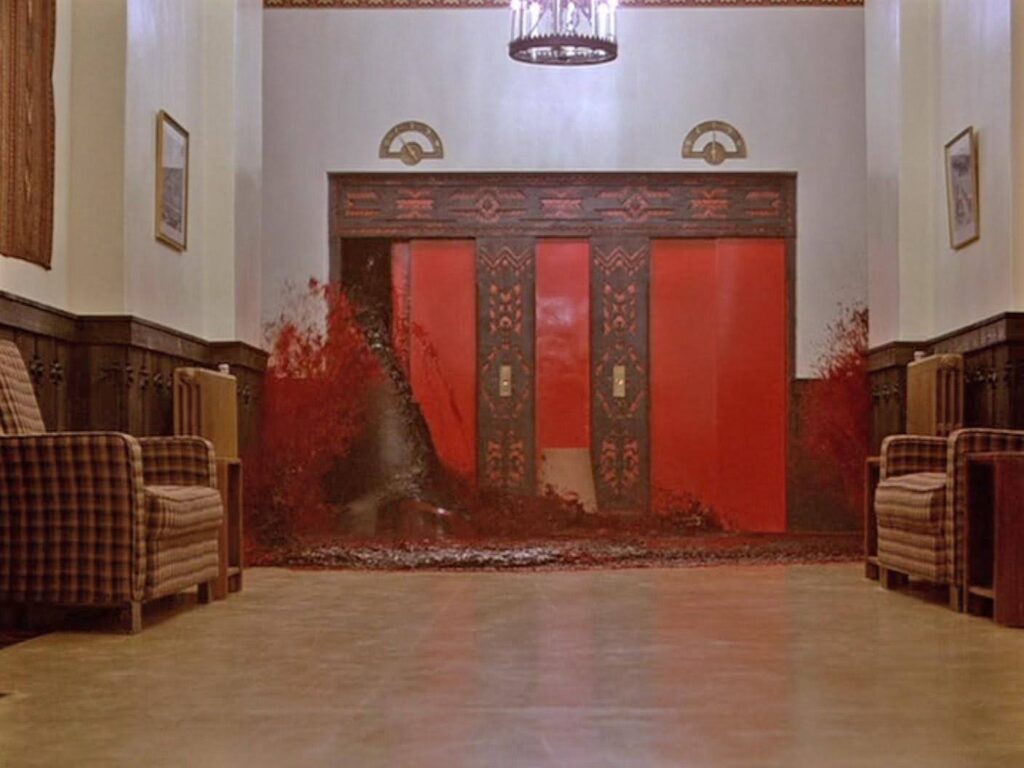
As screenwriters, our job is to breathe life into the page.
How do we do that? Well, there are many techniques we can use, but one of the most powerful tools in our storytelling arsenal is personification. Whether you want a storm to rage with purpose, a house to groan with sorrow, or an AI to feel heartbreak (especially when it’s not used properly), personification can take a flat script and make it unforgettable!
Personification has been a staple in film and television for as long as it’s been around, but of course it must be used well. So, what does make good personification, and when is it just cliched or confused?
In today’s blog, we’ll be answering all your personification questions. From the basics to some iconic examples from film and television, we’ll even throw in some practical ways you can use personification in your next script. It wouldn’t be a Celtx blog without those juicy top tips!
Let’s get into it…
In This Article
- What is Personification?
- Why It Matters in Screenwriting
- Personification Examples from Film & TV
- How to Use Personification in Your Script
- Tips for Visualizing Non-Human Characters
- Conclusion
- FAQ
What Is Personification?
Personification is a literary device where human traits, emotions, or intentions are attributed to non-human entities or inanimate objects.
In terms of screenwriting, this could mean a ‘growling thunderstorm’ or a car that ‘sighs with exhaustion’. Instead of just being a simple description, the personification adds emotional resonance, which a reader can relate to.
Don’t confuse personification with anthropomorphism, where animals or objects are given full human characteristics, like speech or complex thought. Personification relies on metaphor and emotion only.
Here are some basic examples of personification:
“The sun kissed their faces as they strolled along the beach.”
“The wind danced between the branches, the leaves shivering in the breeze.”

Why It Matters in Screenwriting
Okay, we get it, this seems like something you’d use more in a novel, not a screenplay! As screenwriters, aren’t we meant to be writing visually and concisely?
Hear us out, as personification does have a place in screenwriting. Yes, screenwriting is a visual medium and we don’t have access to inner monologue or the long descriptive passages we’d find in novels. Every single line of action must tell a story and push the plot forward.
That’s where personification comes in. It adds emotional subtext to visual storytelling.
So, why does personification matter in screenwriting?
- It adds emotional depth. By giving emotion to the world around our characters, we mirror and enhance their inner lives.
- It adds atmosphere and helps to build the mood and tone. For example, a ‘moaning’ house sets a much different tone than a ‘quiet’ one.
- It adds symbolism. The way the environment behaves can indicate themes or character arcs.
- It supports pacing and flow. Personification helps keep the prose vivid and engaging for the reader, especially during slower scenes.
In short, personification can transform an ordinary scene into an extraordinary one by bridging the gap between the reader’s emotions and the story’s atmosphere.
Every powerful story starts with strong visuals and voice.
Click here to start your free Celtx trial.
Personification Examples from Film & TV
Now for the good stuff! Let’s look at how some of the world’s best screenwriters use personification in many different genres.
Case Study #1 | Inside Out (2015)
Inside Out, written by Pete Doctor, Meg LeFauve, and Josh Cooley, is a masterclass in giving human traits to abstract concepts.
Yes, this is technically anthropomorphism, with Joy, Sadness, Fear, Disgust and Anger all personified emotions, but the brilliance lies in how the world inside Riley’s head mirrors her emotional state.
Just like in this scene where Riley argues with her parents, the emotions inside their heads leading the way.
Case Study #2 | The Haunting of Hill House (2018)
This Netflix horror series uses the titular house as not just the setting, but an individual emotional entity. The house groans, creaks, and responds to the trauma of the characters. Through its personification, it resonates grief, memory, and guilt.
In this excerpt from Mike Flanagan’s pilot script, Young Hugh even refers to the house as its own entity:


Case Study #3 | Her (2013)
In this romance/sci-fi feature, Samantha, the AI, isn’t a physical character. However, she’s imbued with so much humanity that the audience fully invests in her emotional arc.
Her feelings of jealousy, curiosity, and love are all personifications of a machine learning consciousness.
In this scene, we see protagonist Theodore out and about with Samantha (the AI). It plays out much like a normal date, except Samantha isn’t physically there. The personification as Samantha as a potential love interest for Theodore, and the reactions that sparks from those around him, including his recent ex-wife, allows for both commentary around AI itself and human connection.
Case Study #4 | Beauty and the Beast (2016)
Okay, this is more of an overt example: candlesticks talk, teapots sing. But beyond the literal, even the castle itself changes with the Beast’s emotional state. It’s dark and stormy when he’s angry, bright and alive when he feels hope or happiness.
Let’s look at this stark contrast in the early pages of the screenplay by Steven Chbosky and Evan Spiliotopoulos. As we open, we see the castle in all its splendor, the Prince in his prime.

However, just pages later, and after the Prince has been transformed into the beast, the castle setting tells a very different story.

Case Study #5 | The Revenant (2015)
The wilderness in this movie is more than a backdrop; it breathes and bears down on Hugh Glass with a cold, calculating presence. The landscape is personified as both an antagonist and force of rebirth.
Personification works best when you know your world.
Use Celtx’s scriptwriting tools to bring your story to life.
Click here to start writing today.
How to Use Personification in Your Script
We’ve learned from the experts, so now it’s time to use personification to enhance our own work. But how can you effectively use personification in your screenplay?
Here are Celtx’s top tips:
1. Know What You’re Enhancing
Ask yourself these questions:
- What am I trying to say about the character?
- What am I trying to say about the emotion?
- What am I trying to say about the theme?
Let the environment reflect the character, emotion and theme. For example, if one of your characters is anxious walking through a corridor, describe the hallway as ‘closing in’ or the ceiling as ‘weighing down’.
2. Be Subtle
While personification can really add to a scene, don’t overuse it. You don’t need it in every single line of action. Instead, it is sparingly and meaningfully. If you overuse personification, you could turn your script into a poem or novel, not a screenplay!
3. Use Strong Verbs and Adjectives
The verb is where the magic happens. Don’t say ‘The tree moves,’ say, ‘The tree claws at the window.’
It may seem like a small difference, but it completely changes the tone and mood of the moment.
4. Anchor the Personification in Visuals
We can’t say this enough: remember you’re writing a screenplay! Your audience are filmmakers reading your script.
Even if a mountain ‘mourns’, make sure you show fog rolling, or echoes haunting the cliffs. Make the writing filmable and always consider the production as a whole.
5. Match the Tone and Genre
Personification in a horror script will feel vastly different than in a romantic comedy. A ‘leering moon’ may work in a gothic tale, but not in a light-hearted rom-com.
Make sure to consider this as you write. If you don’t, your script could seem confused and disengage the reader very quickly.
Tips for Visualizing Non-Human Characters
Want to take personification a step further? Want to give a ship, house, or natural element a personality? Want to show this on film?
Well, you want to show it, not tell it (we know, the age old saying ‘show, don’t tell’!)
When it comes to showing personification on screen, there are several things you can do:
1. Use Reaction Shots
How do the human characters in your movie react to the non-human ones? Their responses to what’s happening around them can suggest the personality of the object.
For example, in Cast Away, Chuck talks to Wilson, the volleyball. His emotional reactions give Wilson an identity and presence throughout the movie despite the fact it’s an inanimate object.

2. Use Sound Design Cues
Sound is a crucial part of a movie, helping to evoke mood and emotion in an audience. A door ‘groaning’ in pain, or the wind ‘screaming’ can help incite feelings and connect the audience further to the action and the characters.Take
The Others, where creaky floors and doors add an eerie sense of awareness to the house, giving it a haunted presence in the background.

3. Lighting and Cinematography
Similar to sound, lighting and how a scene is shot plays a big part in a movie’s aesthetic. Shadows that move as if watching, light that flickers with intent can add a little extra edge to a scene. In Blade Runner 2049, the lighting in Wallace Corporation’s HQ casts strange reflections and movements, personifying the space as intimidating and all-seeing.

4. Pacing and Editing
During a scene, a moment of stillness where the camera lingers can imply sentience or awareness, while a quick pan can evoke urgency or panic.
How the camera moves can influence how an audience feels during a scene and as the action plays out. Just like in 2001: A Space Odyssey where HAL’s unblinking red eye paired with long pauses gives the computer a calculating, watchful demeanor.

5. Repeated Motifs
If a place or object reacts similarly to a specific emotion or event, the audience begins to feel like it ‘knows’ something.
This is exactly the case in The Shining, where the Overlook Hotel repeatedly reacts to Jack’s descent into madness. Doors open by themselves, blood floods the hallway. All this creates a sense that the hotel is complicit and very much alive.

Conclusion
Personification is one of the most potent yet underutilized tools in a screenwriter’s toolkit. It adds emotional resonance, depth, and texture to your world without needing dialogue. Whether subtle or overt, it invites the viewer to feel more deeply and see more clearly.
In a world saturated with stories, it’s not enough to write what happens. You need to shape how it feels. So let your shadows whisper, your cities breathe, your oceans rage, and watch your story come alive.
FAQ
Before we go, let’s answer some of the top questions aspiring storytellers have about personification:
Q: What is an example of personification?
A: ‘The thunder grumbled like an old man.’ This gives the thunder a human trait, grumbling, to evoke emotion.
Q: What is the basic meaning of personification?
A: Personification is a literary device where non-human objects or entities are described with human characteristics to add emotion or clarity.
Q: What are 50 examples of personification?
A:
- The wind whispered.
- The sun smiled.
- The car groaned.
- The leaves danced.
- The fire roared.
- The door complained.
- The phone screamed.
- The clouds wept.
- The stars winked.
- The city sleeps.
- The river ran wild.
- The storm attacked.
- The moon watched.
- The clock mocked me.
- The engine coughed.
- The couch sighed.
- The wind howled.
- The mountain stood proud.
- The paper shivered.
- The computer thought for a moment.
- The ice bit my fingers.
- The tree begged for sunlight.
- The kettle hissed angrily.
- The snowflakes danced in the wind.
- The thunder growled.
- The house exhaled deeply.
- The shadows crept along the walls.
- The pen refused to write.
- The stars whispered ancient stories.
- The road stretched lazily into the horizon.
- The waves clapped with joy.
- The mirror stared back.
- The candle sighed its last breath.
- The forest murmured secrets.
- The gravel crunched in protest.
- The fog hugged the city tightly.
- The moonlight kissed her cheek.
- The fence groaned in the wind.
- The jacket welcomed me with warmth.
- The puddle giggled under my feet.
- The alarm clock shrieked.
- The garden woke up with the sun.
- The train screamed through the tunnel.
- The fireflies blinked in rhythm.
- The gate stood guard.
- The storm pounded on the roof.
- The clouds sulked above the town.
- The curtains danced in the breeze.
- The wind carried a warning.
- The hills rolled away into the distance.
Q: What is personification for kids?
A: Personification is when you make something that’s not alive act like it is. Like saying, ‘The sun peeked through the clouds’ or ‘The wind whistled through the trees’.
Ready to write stories that breathe?
Sign up for Celtx and start your free trial today.
Strengthen your storytelling skills with these articles:
- What is a Motif in Film? Themes & Symbols Explained
- Hook, Hold, and Deliver: The Screenwriter’s Guide to Pacing
- Writing Subtext: How to Say More by Saying Less
